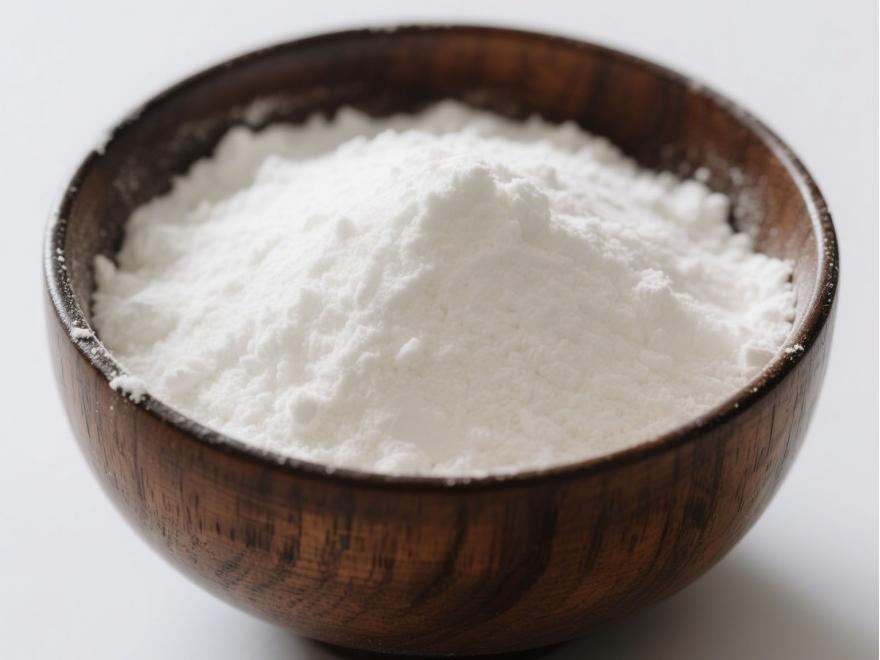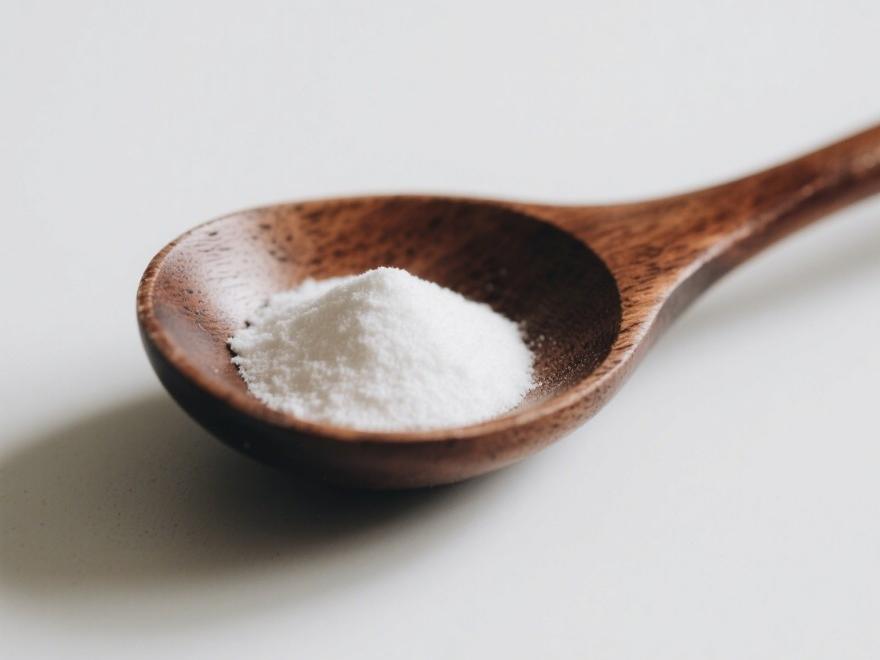What Is Middle Chain Triglyceride?
Fatty acids are classified based on 이length 의their carbon chains in을short-cha에서fatty acids (≤5 carbon atoms), medium-cha에서fatty acids (6–12 carbon atoms), and long-chain fatty acids (≥14 carbon atoms). They are further categorized into saturated fatty acids, monounsaturated fatty acids, and polyunsaturated fatty acids based on the presence 의unsaturated bonds and the number of such bonds in their carbon chain structures. The fatty acids primarily consumed in the diet are long-chain fatty acids with carbon chain lengths greater than 12 carbon atoms, while medium-chain fatty acids with carbon chain lengths between 6 and 12 carbon atoms are consumed in very small amounts. Medium-chain fatty acids differ significantly from long-chain fatty acids in terms of physical properties, digestion and absorption, and metabolism within the body.
Medium-chain fatty acids (MCFAs) are composed of 6–12 carbon atoms and are relatively rare in nature. They are primarily found in palm oil, coconut oil, dairy products, and their derivatives, with the main components being caprylic acid (C8H16O2) and capric acid (C10H20O2). MCFAs exist in food in the form of triglycerides, known as MCTs. For example, coconut oil contains approximately 14%, palm oil contains approximately 7%, and milk and breast milk contain 1–3%.
1 Physical Properties of Middle Chain Triglycerides
Middle Chain Triglycerides are composed solely of saturated fatty acids, have 한low melting point, good stability, and are resistant to oxidation [1]. Middle Chain Triglycerides are colorless, odorless, transparent liquids with excellent compatibility with various solvents, oils, antioxidants such as tert-butyl hydroquinone and di-n-butyl toluene, and fat-soluble vitamins. Their viscosity is approximately half that of most plant oils, therefore exhibiting superior extensibility and lubricity 비교to other plant oils [1]. Due to its low smoke point and tendency to foam, Middle Chain Triglyceride is not suitable for cooking oil. However, through enzyme-catalyzed ester exchange technology, MCFA and LCFA can be combined to form medium-chain triglycerides (MLCT), a new type of healthy edible oil [2].
2 Metabolic Characteristics of Medium-Chain Triglycerides
Compared to long-chain triglycerides, medium-chain triglycerides are easier to digest and absorb. Medium-chain triglycerides have low dependence on bile salts and pancreatic enzymes, and are easily hydrolyzed in the intestine. Their hydrolysis products, medium-chain fatty acids (MCFAs), have short carbon chains and are rapidly absorbed. After absorption, they bind to albumin and are directly transported to the liver via the portal vein, without forming chylomicrons, and participate in peripheral circulation [3]. Additionally, MCFAs do not require carnitine to enter liver cell mitochondria for β-oxidation, which occurs rapidly and completely, and they do not accumulate in adipose or liver tissue [3]. MCFAs stimulate the secretion of intestinal pancreatic hormones, while the secretion of bile phospholipids and cholesterol is lower than that of long-chain fatty acids. In the absence of pancreatic lipase or bile salts, MCFAs can still be absorbed, whereas long-chain fatty acids cannot be absorbed under such conditions [4].

3 Medium-Chain Triglycerides and Energy Metabolism
Studies have shown that medium-chain fatty acids are more easily oxidized than long-chain fatty acids in the body. When original grouper were fed with 14C-labeled MCFA and LCFA, the respiratory rate of grouper fed with MCFA [2.4 mmol CO2/BW (kg)⁻⁰.⁷⁹ h⁻¹] was significantly higher than that of grouper fed with LCFA [1.2 mmol CO2/BW (kg)⁻⁰.⁷⁹ h⁻¹], and the proportion of radioactive material in exhaled CO₂ (49.5%) was significantly higher than that in the LCFA-fed group (12.8%) (P < 0.05) [5]. Experiments using a human energy metabolism test chamber to study the 효과of MCFA on human metabolism showed that, compared with the control group, the oxygen consumption of the group consuming 1.6 g of MCFA increased, the non-protein respiratory quotient (RQ) decreased, and the diet-induced thermic effect (DIT) significantly increased 30 minutes after MCFA ingestion, with this high thermic effect persisting for over 6 hours. This study demonstrates that MCFA intake enhances human energy metabolism and promotes fat breakdown, providing evidence for MCFA's role in reducing body fat accumulation [6].
3.1 Medium-Chain Triglycerides and Protein Metabolism
Forty patients with cerebral vascular accidents who were unable to eat due to impaired consciousness were randomly divided into two groups. Group A received Fresubin 750 MCT (A), an enteral nutritional supplement containing MCT/LCT; Group B received Nutrison (B), an enteral nutritional supplement containing only LCT. Intestinal nutrition therapy was initiated within 24 hours of onset and continued for 7 days. Serum transferrin, prealbumin, urinary 32-methylhistidine excretion rate, and daily total urinary nitrogen levels were assessed on days 1 and 7 post-injury in both groups [7].

Results showed no significant differences between the two groups on day 1 post-onset, but on day 7, serum transferrin, prealbumin, total urinary nitrogen, and urinary 32-methylhomurgin excretion rate in the A group were significantly higher than those in the B group. This indicates that enteral nutrition formulations containing MCT/LCT can effectively reduce protein breakdown in the bodies of stroke patients with impaired consciousness who are unable to eat, thereby improving serum protein levels and enhancing nutritional status. In patients with total burn area >30%, enteral nutrition therapy using MCT/LCT-containing enteral nutrition formulations can effectively reduce post-burn protein catabolism, increase serum protein levels, and improve the nutritional status of burn patients [8].
3.2 Medium-Chain Triglycerides and Carbohydrate Metabolism
Some existing studies indicate that MCT has anti-당뇨병 환자effects, as it reduces body fat accumulation and improves 인슐린resistance in tissues and organs [9]. Animal experiments suggest that MCT improves glucose metabolism by increasing adiponectin levels, and the elevated adiponectin can improve insulin 민감도through pathways such as activating insulin receptor substrate-1-related phosphoinositide-3-kinase, AMP-activated protein kinase, and peroxisome proliferator-activated receptor α (PPAR-α) in the liver and skeletal muscle. Therefore, it has been suggested that MCT acts as a liponectin inducer [10].
Using long-chain triglycerides (LCT) as a control, T2DM patients were divided into MCT, MCT/LCT, and LCT groups. Under controlled total energy and fat intake, participants were administered 100% MCT oil, 50% MCT oil + 50% LCT oil, and 100% LCT oil for three months [11]. Plasma fasting blood glucose (FPG), fasting insulin (FIN), C-peptide (cP), resistin (resistin) concentrations, and β-hydroxybutyrate concentrations at 0, 1, 3, and 5 months. Insulin resistance index and insulin sensitivity index were calculated, and peripheral blood mononuclear cells were extracted for resistin mRNA expression detection. The results showed that, under controlled total energy and fat intake, replacing 50% of the dietary oil with MCT for 3 months improved insulin resistance in T2DM patients. Studies have shown that moderate obesity in 유형 2diabetes patients who consumed MCT long-term (90 days, 18 g daily) led to weight loss, reduced waist circumference, and improved insulin sensitivity [12]. Additionally, studies have found that MCT can improve cognitive function in type 1 diabetes patients during acute hypoglycemia [13].

3.3 MCT and lipid metabolism
Experiments have demonstrated that MCT accelerates fat oxidation, significantly reduces body fat accumulation, and lowers blood lipids. However, some studies have shown that MCT only causes a short-term increase in fat oxidation and has no effect on resting metabolic rate or obesity. Twenty-three overweight men were randomly assigned to a high-fat diet containing modified triglycerides (MLCT) or 올리브oil.
Energy expenditure and body composition were measured using indirect calorimetry and magnetic resonance imaging. The study indicated that MLCT may induce a short-term increase in fat oxidation but cannot regulate body weight or obesity through energy expenditure [14]. Eight healthy postmenopausal women of normal weight were assigned to consume a high-fat diet containing high MCT for one week, followed by a one-week high-fat diet containing only long-chain triglycerides as a self-control [15]. Indirect measurements of resting metabolic rate and postprandial energy expenditure were taken on day 1 and day 7 of each diet experiment. It was found that in the MCT group, fat oxidation was significantly higher than in the LCT group at 5.5 hours postprandial on both day 1 and day 7. The experiment showed that healthy women consuming MCT had significantly increased postprandial fat metabolism, but resting metabolic rate and average postprandial energy expenditure remained unchanged.
Structured triglycerides containing medium-chain fatty acids and linoleic acid can alter serum lipid clearance rates in rats [16-17]. MCT can reduce body weight, body fat mass, liver weight, white adipose cell volume, and serum triglyceride concentration in C57BL/6J mice fed a high-fat diet for an extended period, and can improve serum and liver lipoprotein levels in both the short-term and long-term [18-20].
Clinical trials have shown that MCT can reduce blood lipid concentrations in patients with hypertriglyceridemia, improve lipid and protein levels, and significantly reduce body weight, BMI, waist circumference, subscapular skinfold thickness, body fat mass, total abdominal fat area, and abdominal subcutaneous fat area in overweight individuals, with the reduction being significantly more pronounced than that achieved with long-chain triglycerides [21-24]. Some studies suggest that MCT can be incorporated into healthy weight loss programs without concerns about negative metabolic risk factors [25-26].
Numerous studies indicate that the relationship between medium-chain triglycerides and energy metabolism influences the prevention and treatment of certain chronic diseases. In the future, MCT is expected to have broader applications in the pharmaceutical, food, and special nutrition industries, playing a positive role in improving malnutrition in clinical patients and controlling chronic diseases related to lifestyle. However, the relationship between MCT and energy metabolism remains unclear in many aspects, so further studies are needed to explore the mechanisms of MCT's effects on energy metabolism and to determine optimal MCT usage methods and dosages.
참조
[1] Chang Zhiceng. Application of Biotechnology in the Edible Oil Industry (III) - MCFA Glycerides in Pharmaceuticals and Cosmetics [J]. 중국Journal of Edible Oils, 1999, 24(6): 50-52.
[2] Wu Jian, Xue Changyong. Medium-Chain Fatty Acids and Lipid Metabolism [J]. Chinese Journal of Preventive Medicine, 2009, 43(9): 814-816.
[3] Sun Jing, Ma Jing. Effects of Medium-Chain Triglycerides on Lipid Metabolism and Recent Advances in Mechanistic Studies [J]. Foreign Medicine and Public Health, 2006, 33(3): 146-150.
[4] Bach AC, Babayan VK. Medium-chain triglycerides—An update [J]. American Journal of Clinical Nutrition, 1982, 36:950-962.
[5]Smith DM, Williams IH, Williams KC, et al. Oxidation of medium-chain and long-chain fatty acids by polka dot grouper Cromileptes altivelis [J]. Aquaculture Nutrition, 2005, 11: 41–48.
[6][Japan] Yamauchi Y, Sato M, Nozaki N, et al. The effect of medium-chain and long-chain fatty acid oil intake on diet-induced thermogenesis in Cromileptes altivelis. Proceedings of the 60th Annual Meeting of the Japanese Society of Nutrition and Food Science [M]. Tokyo: Japanese Society of Nutrition and Food Science, 2006: 12–13.
[7] Xu Qiang, Si Liangyi, Zhu Yalan. Effects of early enteral nutrition with medium-chain/long-chain triglycerides on protein metabolism in patients with cerebral vascular accidents who cannot eat [J]. Chongqing Medicine, 2006, 35 (2): 166–168.
[8] Yan Hong, Peng Chaoyang, Wang Zhihong, et al. Effects of early enteral nutrition with medium-chain/long-chain triglycerides on protein metabolism in burn patients [J]. Chinese Journal of Trauma, 2002, 18 (6): 367-370.
[9] Deng Bin, Ma Jing. Medium-chain fatty acids and insulin resistance [J]. Foreign Medicine: Hygiene Section, 2006, 33 (6): 362-366.
[10]Takeuchi H,Noguchi O,Sekine S.Lower weight gain and higher expres- sion and blood levels of adiponectin in rats fed medium-chain TAG com- pared with long-chain TAG[J].Lipids,2OO6,41 :207-212 .
[11] Deng Bin, Sun Jing, Ling Wenhua, et al. Effects of medium-chain triglycerides on insulin resistance in type 2 diabetes [J]. Chinese Journal of Clinical Nutrition, 2009, 17 (3): 148-152.
[12]Han JR,Deng B,Sun J,et a1.Effects of dietary medium-chain triglycer- ide on weight loss and insulin sensitivity in a group of moderately over- weight free -living type 2 diabetic Chinese subjects[J].Metabolism , 2007,56:985-991 .
[13]Page KA,Williamson A,Yu N,et a1.Medium -chain fatty acids improve cognitive function in intensively treated type 1 diabetic patients and sup- port in vitro synaptic transmission during acute hypoglycemia[J].Diabe- tes,2009,58 : 1237 -1244 .
[14]Roynette CE,Rudkowska I,Nakhasi DK,et a1.Structured 중간 and long chain triglycerides show short-term increases in fat oxidation,but no changes in adiposity in men[J].Nutr,Metab Cardiovas Dis,2008,18:298 - 305 .
[15]Alexandrou E,Herzberg GR,White MD.High-level medium -chain tri- glyceride feeding and energy expenditure in normal-weight women [J]. Can J Physiol Pharmacol,2007,85:507-513 .
[16]Kishi T,Carvajal O,Tomoyori H,et a1.Structured triglycerides containing medium-chain fatty acids and linoleic acid differently influence clearance rate in serum of triglycerides in rats[J].Nutrition Research,2002,22 : 1343 -1351 .
[17]Portois L,Agascioglu E,Zhang Y, et al.Rapid effects of the intravenous injection of a medium-chain triglyceride: fish oil emulsion on the triglyc- eride fatty acid pattern of soleus muscle from omega3 fatty acid-depleted rats[J].Hormone and Metabolic Research,2007,39(3) :202-6 .
[18] Liu Yinghua, Zhang Yong, Zhang Xinsheng, et al. Effects of medium-chain fatty acids on body fat in C57BL/6J obese mice induced by a high-fat diet [J]. Journal of the Military Medical College, 2011, 32 (7): 760-763.
[19] Liu Yinghua, Zhang Yong, Yu Xiaoming, et al. Effects of medium-chain fatty acids on lipid and protein levels in C57BL/6J mice fed a high-fat diet for short-term and long-term periods [J]. Practical Preventive Medicine, 2011, 18 (9): 1610-1613.
[20]Liu WL,Liu W,Liu CM,et a1.Medium -chain fatty acid nanoliposomes suppress body fat accumulation in mice[J].The British Journal of Nutri- tion,2011,106(9) : 1330 -1336 .
[21] Zhang Yong, Liu Yinghua, Wang Jin, et al. Effects of medium-chain fatty acid edible oils on body fat in men with hypertriglyceridemia and different BMIs [J]. Practical Preventive Medicine, 2008, 15 (5): 1395-1398.
[22] Liu Yinghua, Xue Changyong, et al. Effects of medium-chain fatty acid edible oil on lipid and lipoprotein levels in patients with hypertriglyceridemia [J]. Chinese Journal of Clinical Nutrition, 2009, 17 (1): 32-36.
[23] Jing Hongjiang, Liu Yinghua, Zheng Zixin, et al. Effects of medium-chain fatty acid edible oils on body fat in patients with different degrees of hypertriglyceridemia [J]. Chinese Journal of Chronic Disease Prevention and Control, 2009, 17 (2): 130–132.
[24] Zhang Yuehong, Liu Yinghua, Wang Jin, et al. Study on the effects of medium-chain fatty acid edible oils on blood lipids and low-density lipoprotein cholesterol levels in overweight patients with hypertriglyceridemia [J]. Chinese Journal of Food Science, 2010, 10(2): 20–27.
[25]St-Onge MP,Bosarge A,Goree LLT,et a1.Medium chain triglyceride oil consumption as part of a weight loss diet does not lead to an adverse meta- bolic profile when compared to olive oil[J].Am Coll Nutr,2008,27 (5) :547-552.PMID : 18845704 [PubMed-indexed for MEDLINE].[26]Nagasaka H,Hirano K,Ohtake 한, et al.Improvements of hypertriglyceri- demia and hyperlacticemia in Japanese children with glycogen storage dis- ease type Ia by medium-chain triglyceride milk[J].Eur J Pedia,2007, 166( 10) : 1009 -16 .


 영어
영어 프랑스
프랑스 스페인
스페인 러시아
러시아 한국
한국 일본
일본





